Do you also feel the temptation to have a samosa after seeing a plate full of those triangular pockets of delight? Well, you are not alone. However, one thing that might stop you from having samosas is your celiac status.
Is samosa gluten free? The short answer is no. Traditionally samosas are made using refined wheat flour, so they are not gluten free. Besides the flour, there are some other ingredients present in the filling that add gluten to the samosas.
But there’s good news! You can easily prepare gluten free samosas at home and enjoy them whenever possible.
Table of Contents
When is Samosa Gluten Free?
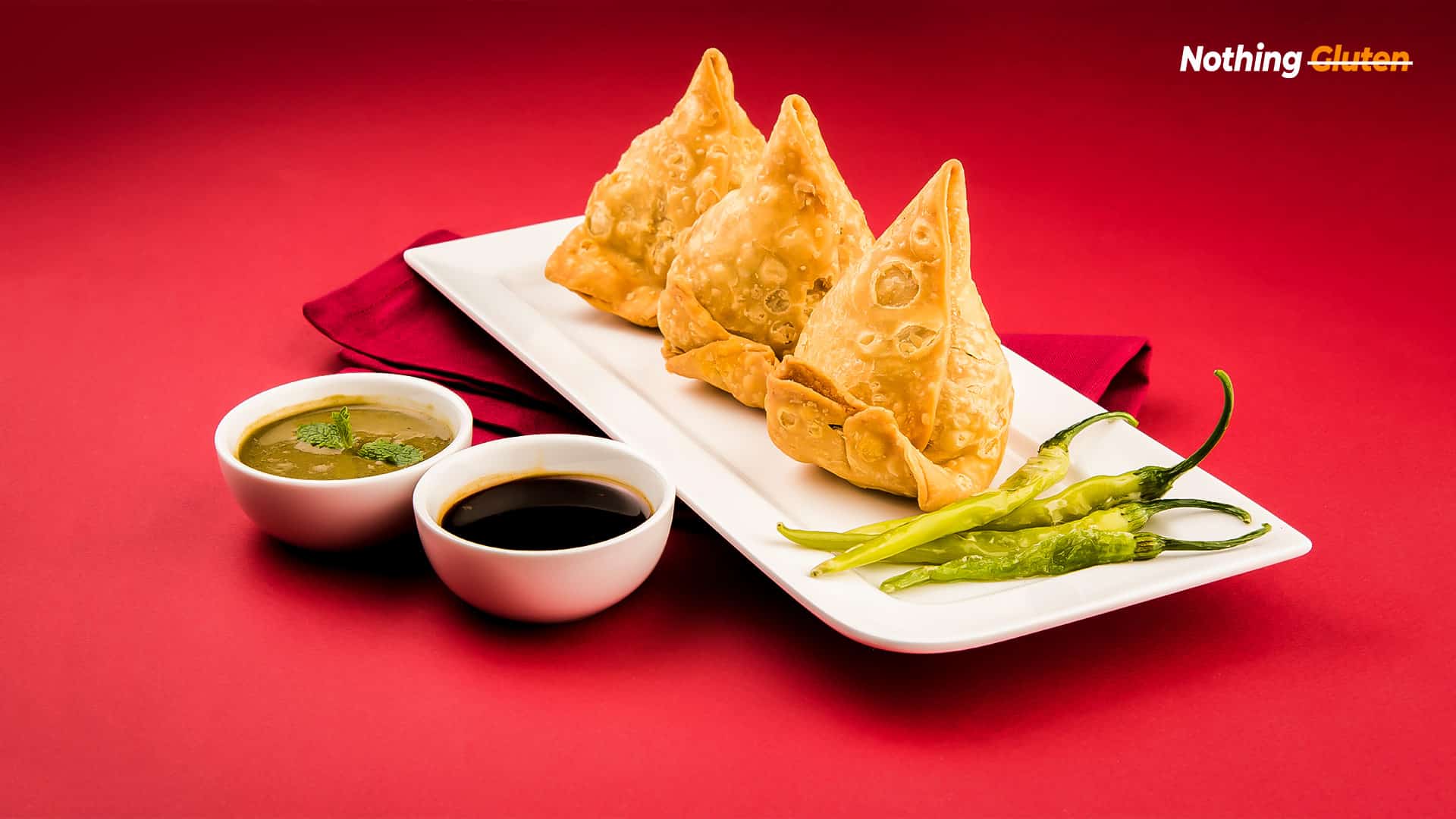
Samosas can be gluten-free under certain circumstances. Below we’ve explained each of them in detail. So, whether you love Indian samosas or gluten-free vegetable samosas, you can have them without thinking twice.
1. Gluten-Free Wrappers
The primary source of gluten in a samosa is the dough used to make the outer pastry. However, gluten-free samosa wrappers are typically made from alternative flour like rice flour, corn flour, or a combination of gluten-free flour.
When samosas are made with these gluten-free wrappers, they become suitable for individuals following a gluten free diet.
2. Gluten-Free Fillings
The fillings of samosas depend on how you make them, but the traditional potato and vegetable filling is naturally gluten-free. Potatoes, onions, peas, and various spices are gluten-free ingredients.
However, it’s important to ensure that the spices used in the filling are pure and do not contain any added gluten or fillers.
3. Dedicated Gluten-Free Preparation
Cross-contamination is a significant concern for individuals with gluten intolerance or celiac disease. To ensure a samosa is truly gluten-free, it should be prepared in a dedicated gluten-free kitchen or with meticulous attention to preventing cross-contamination.
This involves using separate utensils, equipment, and cooking surfaces to avoid contact with gluten-containing ingredients.
It’s important to note that not all samosas are gluten free by default. Traditional samosas typically use wheat flour wrappers, which contain gluten.
Therefore, when ordering or purchasing samosas, it’s essential to inquire about the ingredients and preparation methods to determine if they are gluten-free.
What is Samosa? What are the Ingredients In There?
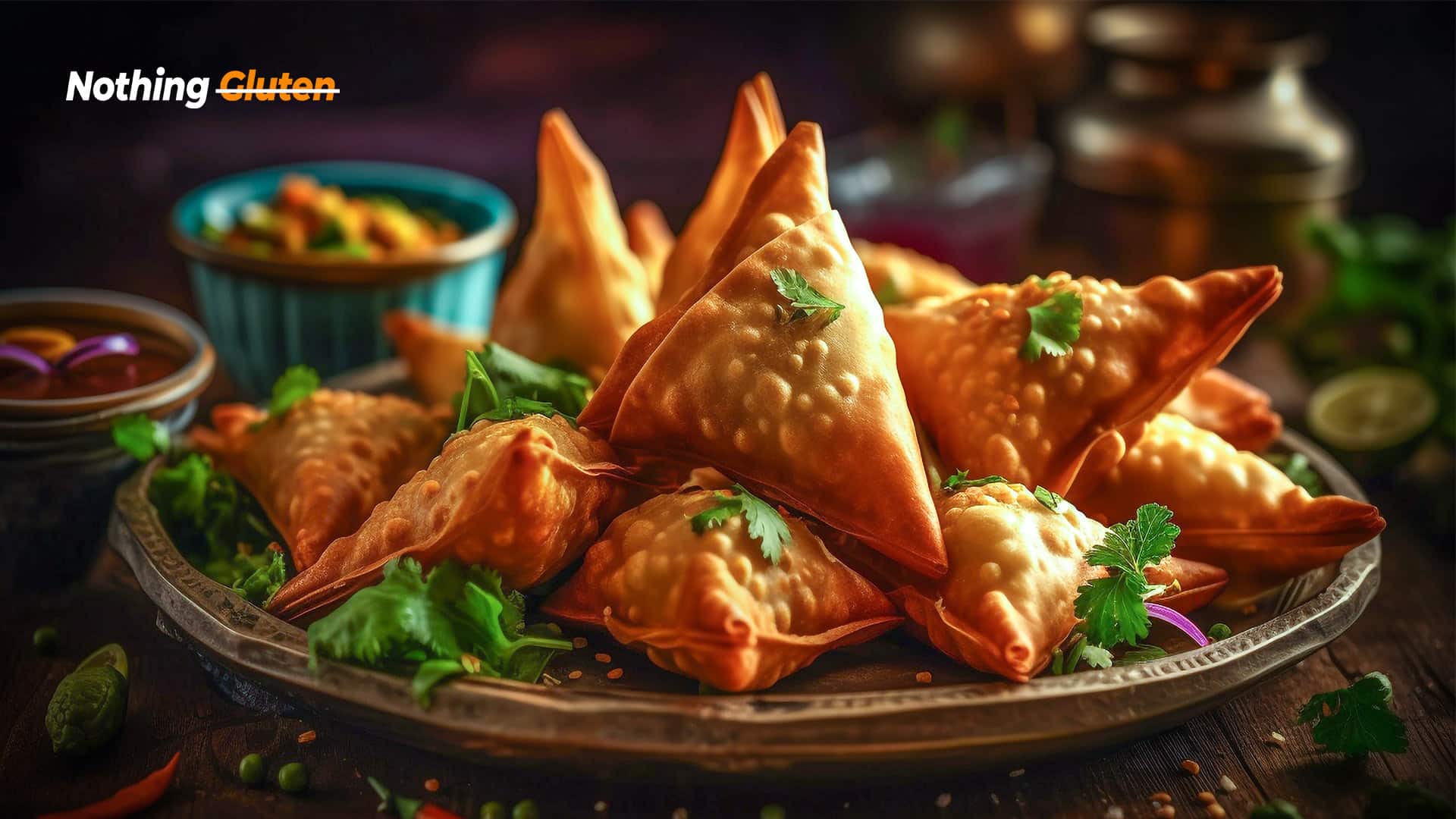
A samosa is a triangular-shaped snack that is incredibly popular in many parts of the world, especially in the Indian subcontinent. It consists of a crispy outer layer made from a special dough, which encases a delicious filling.
The filling of a samosa can vary, but it commonly includes a combination of ingredients like spiced potatoes, onions, peas, and a medley of herbs and spices. These flavorful components combine to create a savory and satisfying experience for your taste buds.
While the ingredients of a samosa can depend on the way you make it, its traditional version contains the following ingredients:
- Potatoes
- Onions
- Peas
- Spices (such as cumin, coriander, turmeric, garam masala)
- Ginger
- Garlic
- Green chili peppers (optional for added heat)
- Fresh cilantro (coriander leaves)
- Salt
- Vegetable oil such as palm oil (for frying)
- Samosa wrappers (made from a mixture of all-purpose flour, water, and sometimes oil)
- Refined wheat flour (gluten-containing ingredient)
Is Samosa Vegan?
Now that you know samosas may be gluten free, it’s important to know their vegan status. Similar to the gluten status, a samosa can be vegan based on certain circumstances.
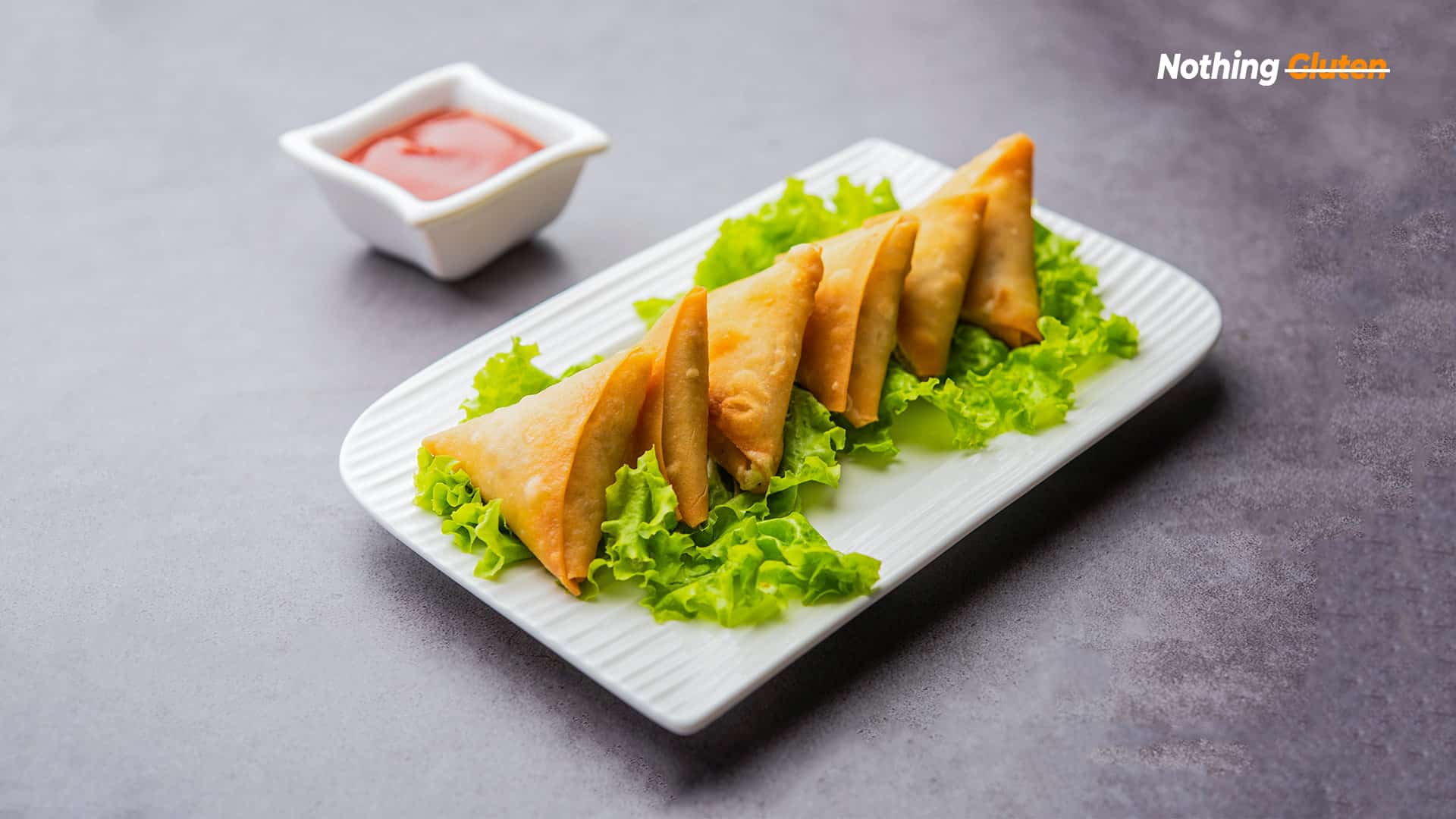
If you think of a traditional samosa, then it is not vegan-friendly because of the butter and oils used to prepare it. However, vegan versions of samosas are quite common and readily available.
To make a samosa vegan, some adjustments can be made to the ingredients:
#1. Dough
Instead of using ghee or butter, vegetable oil or plant-based margarine can be used to make the dough. This ensures that the outer pastry remains free from animal products.
#2. Filling
The filling of a samosa can easily be made vegan by excluding any dairy-based ingredients. A typical vegan filling may consist of potatoes, onions, peas, various spices, and herbs, all cooked in vegetable oil.
It’s important to check that the spices used in the filling are also vegan and do not contain any animal-derived ingredients.
#3. Cooking Method
The cooking method for samosas typically involves deep frying in vegetable oil, which is suitable for vegans. However, it’s always important to check that the oil used for frying is plant-based and doesn’t contain any animal fats.
If you are purchasing samosas from a store or restaurant, it’s advisable to inquire about the ingredients and cooking methods to ensure they align with your vegan preferences.
Many restaurants offer vegan samosas as part of their menu, so you can enjoy this delightful snack without compromising your vegan lifestyle.
Are There Any Gluten Free Samosa Brands?
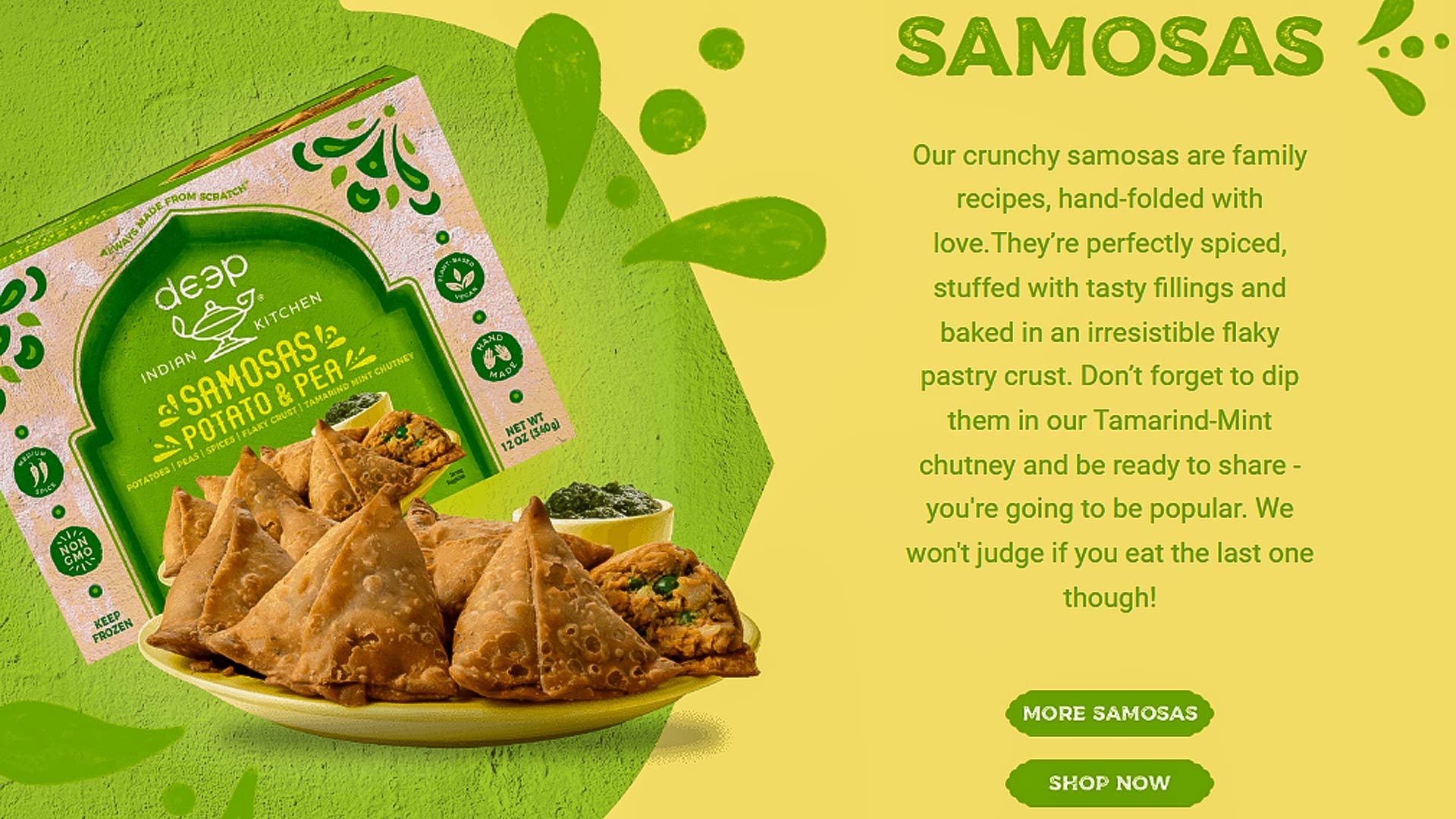
Yes, there are several gluten-free samosa brands available in the market, like Deep Indian Kitchen, UDI’s, Sukhi’s and more. As awareness of gluten intolerance and dietary restrictions has increased, many food companies have developed gluten-free alternatives to cater to those with gluten sensitivities or celiac disease.
These brands specialize in producing samosas with gluten-free wrappers or dough. However, it’s important to note that availability may vary depending on your location.
Can You Make Gluten Free Samosas? Top Recipe To Try
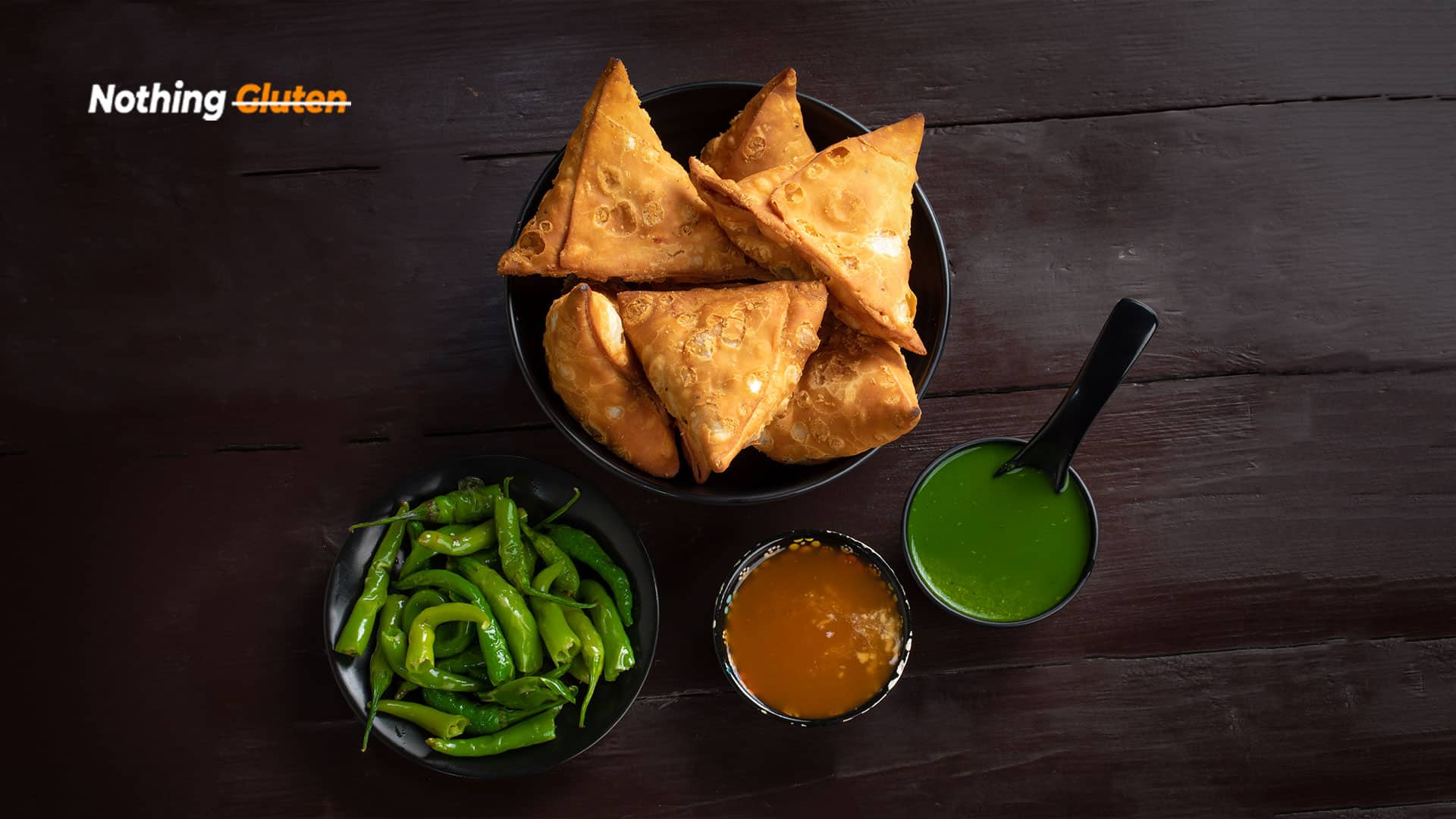
If finding gluten free samosas looks like a task, preparing them at home will ease the stress. Below we’ve covered an amazing and easy-to-follow recipe you can use to make delectable samosas at home.
Ingredients You Need
- Rice flour ½ cup
- Cumin seeds ¼ tbsp
- Oil ½ tbsp
- Hot water ½ cup
- Xantham gum ½ tbsp
- Filling ( of your choice)
Step 1: Take all ingredients in a bowl except the filling and mix with a spatula. Then knead the dough with your hands to get the right texture and consistency.
Step 2: Divide the dough roughly and make small balls. Now sprinkle some rice flour on the counter and then put one dough ball on it. Spread the ball with your hands, and flatten it with a rolling pin.
Step 3: Cut the dough into half, and apply water to the edges. Try to make a conical shape out of it so that you can fill the samosa filling inside it.
Step 4: Now put the filling inside the cavity, and dampen the edges of the samosa. Seal the samosa properly and it’s ready for drying. Make multiple samosas following the same method, and deep fry them on medium heat until turning crispy brown.
FAQs
Is samosa chaat gluten free?
Samosa chaat can potentially be gluten free, depending on the specific ingredients used in its preparation. The traditional samosa chaat consists of broken or crushed samosas topped with a variety of flavorful ingredients, such as chutneys (typically tamarind and mint chutney), yogurt, sev (crispy chickpea flour noodles), onions, tomatoes, cilantro, and spices.
What flour is samosa made of?
Samosa dough is typically made from all-purpose wheat flour, also known as plain flour or maida. This wheat-based flour is commonly used in various culinary applications, including the preparation of samosas.
Can you have samosa on a gluten-free diet?
On a strict gluten-free diet, consuming traditional samosas made with wheat flour is not recommended, as it may contain gluten. However, you can still enjoy samosas on a gluten-free diet by opting for gluten-free alternatives.
What ingredients of a samosa contain gluten?
In a traditional samosa, the main ingredient that contains gluten is the dough used to make the outer pastry. The dough is typically made from all-purpose wheat flour, which is high in gluten content.
Gluten is a protein found in wheat, barley, and rye, and it provides elasticity and structure to dough when mixed with water.
Conclusion
The gluten status of samosas depends on various factors, including the dough used to make the outer pastry and the ingredients used in the filling. Traditional samosas are typically made with wheat flour containing gluten, making them unsuitable for individuals with gluten sensitivities or celiac disease.
However, the good news is that you can make gluten free samosas at home. These samosas are made with alternative flour, such as rice flour or corn flour, which eliminates gluten while maintaining the delicious taste and texture.
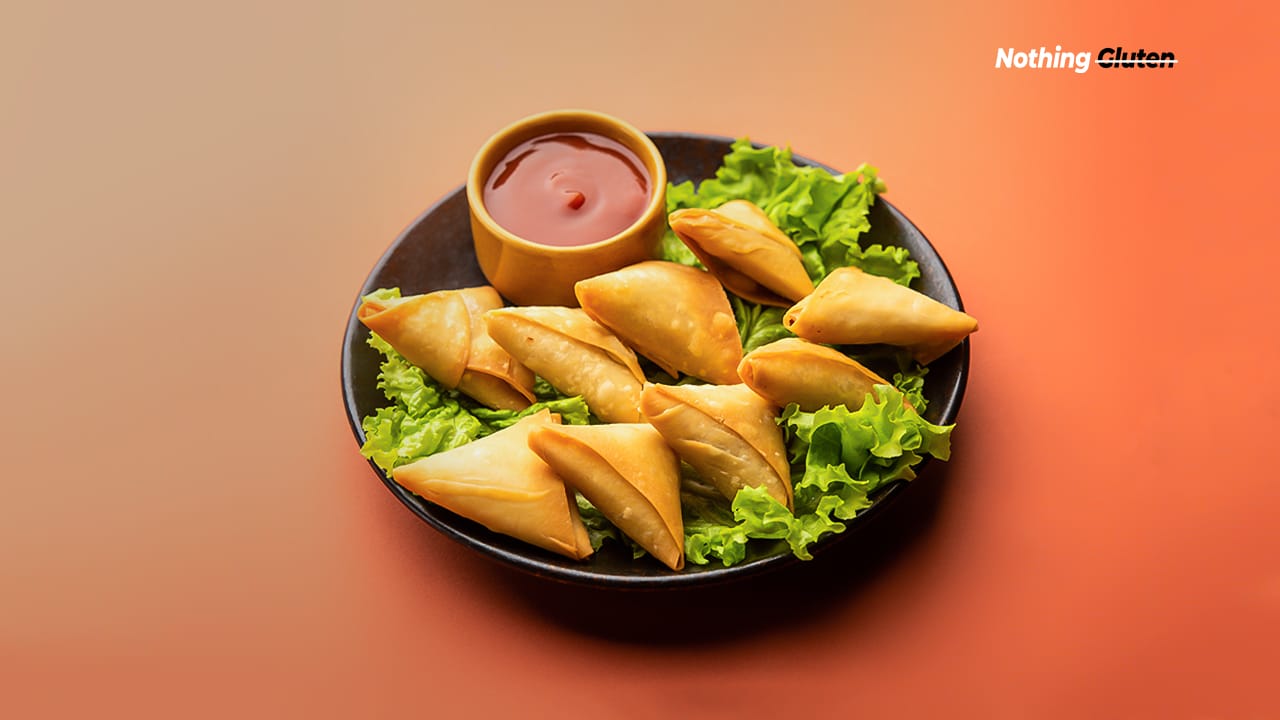
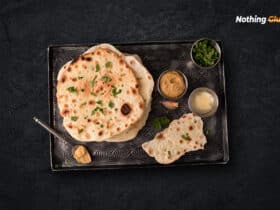

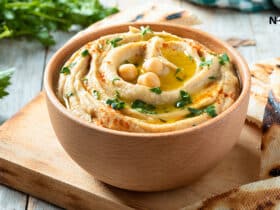

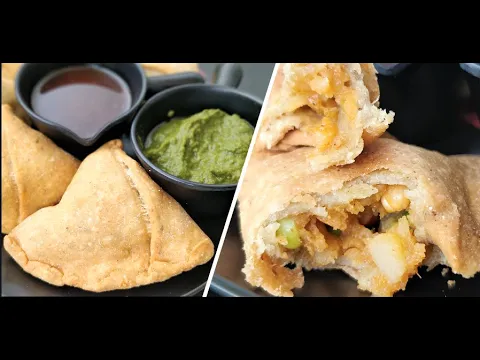
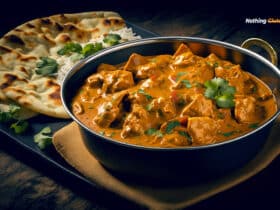




Leave a Reply
View Comments